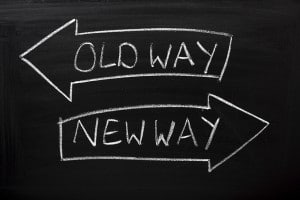
Lots of people are wondering, how did Proposition 47 pass? What influenced voters?
Smash hit TV shows like “Orange is the New Black” put human faces to prisoners’ predicaments and encouraged empathy. The viral-hit podcast “Serial,” http://serialpodcast.org/produced by the same company as “This American Life,” (WBEZ Chicago) profiles Adnan Syed who might have been wrongfully convicted as a teenager of murdering his girlfriend. Audiences for both programs are completely riveted—making it clear that those who are incarcerated aren’t being forgotten in pop culture. No one’s interested in just locking them up and throwing away the key anymore. Once you hear the stories (real or fictionalized), it becomes practically impossible to just turn your back on prisoners.
Aside from the shift in pop culture, what else influenced the passage of Proposition 47? Like any government change, it was also driven by money. Finances are always a factor in government elections and in every proposition put forth for voters to say yay or nay on. It sounds cynical, but it has an element of truth to it—money buys votes.
In terms of Proposition 47, those who supported its passage spent a lot more money on the campaign than those who were against it. Specifically, those who were FOR Proposition 47 spent $5,177,162, and those who were AGAINST it spent $429,500 http://www.scpr.org/news/2014/10/17/47466/election-2014-faq-prop-47-criminal-sentencing/. Wow—that’s a huge difference. By far, the biggest contributor to the FOR side was the Open Society Policy Center, which is billionaire investor and philanthropist George Soros’ project. http://www.scpr.org/blogs/politics/2014/09/11/17288/money-in-elections-new-top-10-lists-call-out-some/
The second biggest contributor for the FOR side was Public Storage founder and conservative Christian Republican B. Wayne Hughes Jr.
Other organizations and individuals who backed the passage of Proposition 47 include the American Civil Liberties Union (ACLU), the Koch brothers, Newt Gingrich, and the National Association of Criminal Defense Lawyers. http://www.thedailybeast.com/articles/2014/11/09/here-s-a-reform-even-the-koch-brothers-and-george-soros-can-agree-on.html (Side note: for an in-depth, fascinating analysis of those who backed Prop 47, click the link above.)
Such a wide spectrum of backers begs the question, what is it about Proposition 47 that unites politically opposed factions? The cultural factors mentioned above are definitely part of it—after all, politicians and billionaires aren’t isolated from popular culture. Financial pressure from state governments (especially California’s, which continues to struggle under heavy pressure to cut spending) definitely factor into the equation.
Another likely factor is the budding mental globalization occurring in the US and throughout the world as a result of social media. News doesn’t have to wait for CNN or the New York Times to analyze it and deliver it to your door—it’s immediately accessable on Twitter or your facebook newsfeed. Anyone who has an internet connection can suddenly be considered a news-worthy source of information. It’s a crazy turnaround from the old ways of sharing information and stories—and it’s helping many people realize that America isn’t always #1. The United States’ incarceration rate is astronomical compared to other countries. For example, the US rate is 700 prisoners for every 100,000 residents, whereas Belize has 305, Rwanda has 595, and Kazakhstan has 351. No country even gets close to the US’ incarceration rate. http://prospect.org/article/six-charts-explain-why-our-prison-system-so-insane
It’s clear that culturally, financially, and politically, the US is ready to change its mass incarceration practices, with California’s Proposition 47 leading the way.




